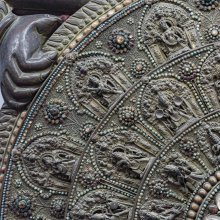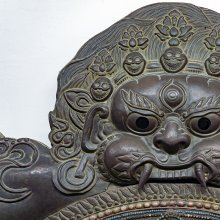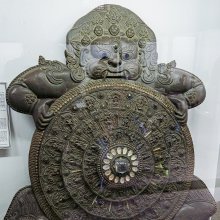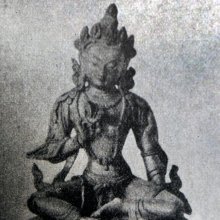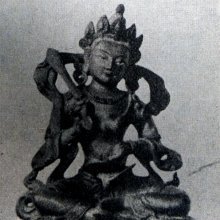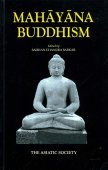Literature: 1 definition
Introduction:
Literature means something in Hinduism, Sanskrit. If you want to know the exact meaning, history, etymology or English translation of this term then check out the descriptions on this page. Add your comment or reference to a book if you want to contribute to this summary article.
Images (photo gallery)
(+27 more images available)
In Hinduism
Purana and Itihasa (epic history)
Source: Shodhganga: Elements of Art and Architecture in the Trtiyakhanda of the VisnudharmottarapuranaLiterature refers to one of the topics dealt with in the Puranic literature: a category of ancient Sanskrit texts which gives a huge contribution in the development of Indian literature.—The Puranas comprises a wide range of subject matters such as Astrology, Astronomy, Medicine, Cosmology, Theology, Philosophy, Literature, Grammar, Art, Architecture, Iconography, etc. All these subject matters are generally depicted through stories and narratives in lucid style in the Puranas. The simplicity of the stories and legends of Puranas always helps the reader get the ideas of different aspects of literature very easily.

The Purana (पुराण, purāṇas) refers to Sanskrit literature preserving ancient India’s vast cultural history, including historical legends, religious ceremonies, various arts and sciences. The eighteen mahapuranas total over 400,000 shlokas (metrical couplets) and date to at least several centuries BCE.
See also (Relevant definitions)
Ends with: Arabic literature, Puranic literature, Sanskrit literature.
Full-text (+12116): Samhita, Purana, Smriti, Pancaratra, Varahapurana, Vamanapurana, Ratnasimha, Elu, Varaha, Drishta, Navina, Vrida, Vyutpanna, Malla, Nilotpala, Vyutpatti, Sahitya, Sanatanagosvami, Durjana, Rukminivivaha.
Relevant text
Search found 324 books and stories containing Literature; (plurals include: Literatures). You can also click to the full overview containing English textual excerpts. Below are direct links for the most relevant articles:
The Theory of Comparative Literature < [July – September, 1982]
Sisters But Still Strangers < [January – March, 2005]
A Common Heritage < [January – March, 1985]
Chaitanya Bhagavata (by Bhumipati Dāsa)
Verse 2.1.195 < [Chapter 1 - The Beginning of the Lord’s Manifestation and His Instructions on Kṛṣṇa-saṅkīrtana]
Verse 1.4.63 < [Chapter 4 - Name-giving Ceremony, Childhood Pastimes, and Thieves Kidnap the Lord]
Verse 2.1.148 < [Chapter 1 - The Beginning of the Lord’s Manifestation and His Instructions on Kṛṣṇa-saṅkīrtana]
A History of Indian Philosophy Volume 1 (by Surendranath Dasgupta)
Part 3 - Classification of the Vedic literature < [Chapter II - The Vedas, Brāhmaṇas And Their Philosophy]
Part 2 - The place of the Vedas in the Hindu mind < [Chapter II - The Vedas, Brāhmaṇas And Their Philosophy]
Part 1 - The place of the Upaniṣads in Vedic literature < [Chapter III - The Earlier Upaniṣads (700 B.c.— 600 B.c.)]
Folk Tradition of Bengal (and Rabindranath Tagore) (by Joydeep Mukherjee)
Chapter 1.6 - Introduction of ‘Comparative Literature’
Chapter 1.7b - The ‘Parallelism’ theory
Expiatory Rites in Keralite Tantra (by T. S. Syamkumar)
5.2. Causes of Impurity in Dharmaśāstras < [Chapter 4 - Socio-Cultural aspects of Expiatory Rites]
Introduction (Expiatory Rites: Concept and Evolution) < [Chapter 1 - Expiatory Rites: Concept and Evolution]
1. Tantra and Kerala Brahmins < [Chapter 4 - Socio-Cultural aspects of Expiatory Rites]
Kamashastra Discourse (Life in Ancient India) (by Nidheesh Kannan B.)
5. Cultural Productions < [Chapter 1 - Rise of Urbanization and Luxury Life in India]
10. Erotic Culture < [Chapter 1 - Rise of Urbanization and Luxury Life in India]
4. Advent of Kāmaśāstra < [Chapter 5 - Looking for Alternatives: Possibilities in Kāmaśāstra]
Related products
(+38 more products available)
